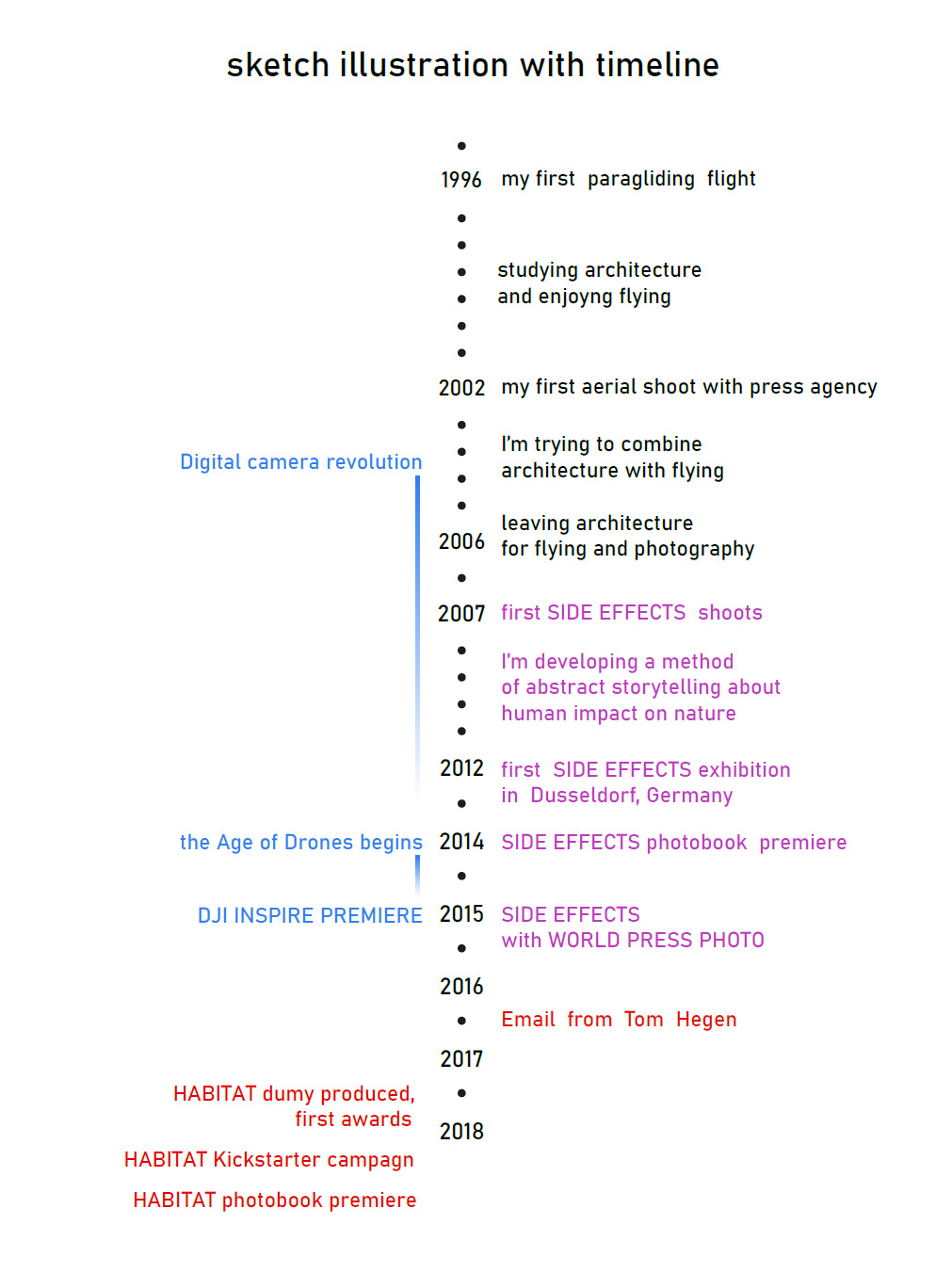On the side effects of Side Effects
A story about the side effects of publishing the Side Effects photobook, exactly 10 years after its release, and how it is with a "cover" in the visual arts.
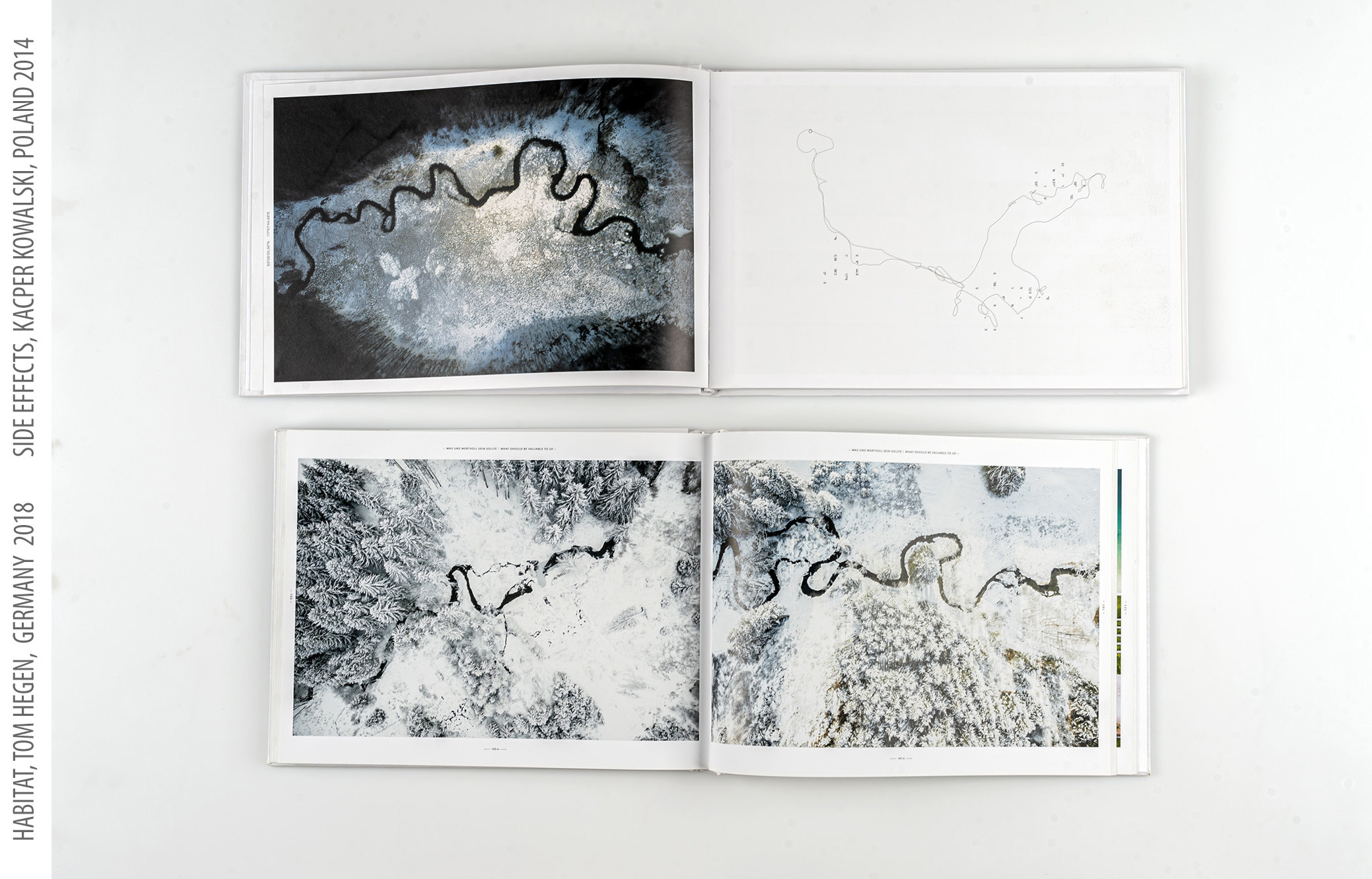
There are two books in the pictures. Side Effects (Migavka Publishing, 2014, Poland) is the one at the top of the list. The book Habitat by Tom Hegen (published by Kerber Verlag, 2018, Germany) is the one at the bottom of the picture.
In 2014 I published a photography book called Side Effects. It was launched in Poland by the Migavka publishing house and since that began its own international life. Side Effects won several major awards, and the project itself won the World Press Photo Award in 2015.
Two years after it was published, Tom Hegen wrote to me. He was studying graphic design in Munich. He liked my book and asked for a discount. Except for that email, I never heard from him again. The student bought the book directly from the publisher.
In 2018, Hegen published his own photography book, titled Habitat, with the German publisher Kerber Verlag. His book includes a bibliography, but I found no mention of Side Effects. The Habitat book has won a number of awards, including the 'Red Dot - Best of the Best' - one of the most prestigious in the field of industrial design. It also won the 'ADC Germany Graduate of the Year' award.
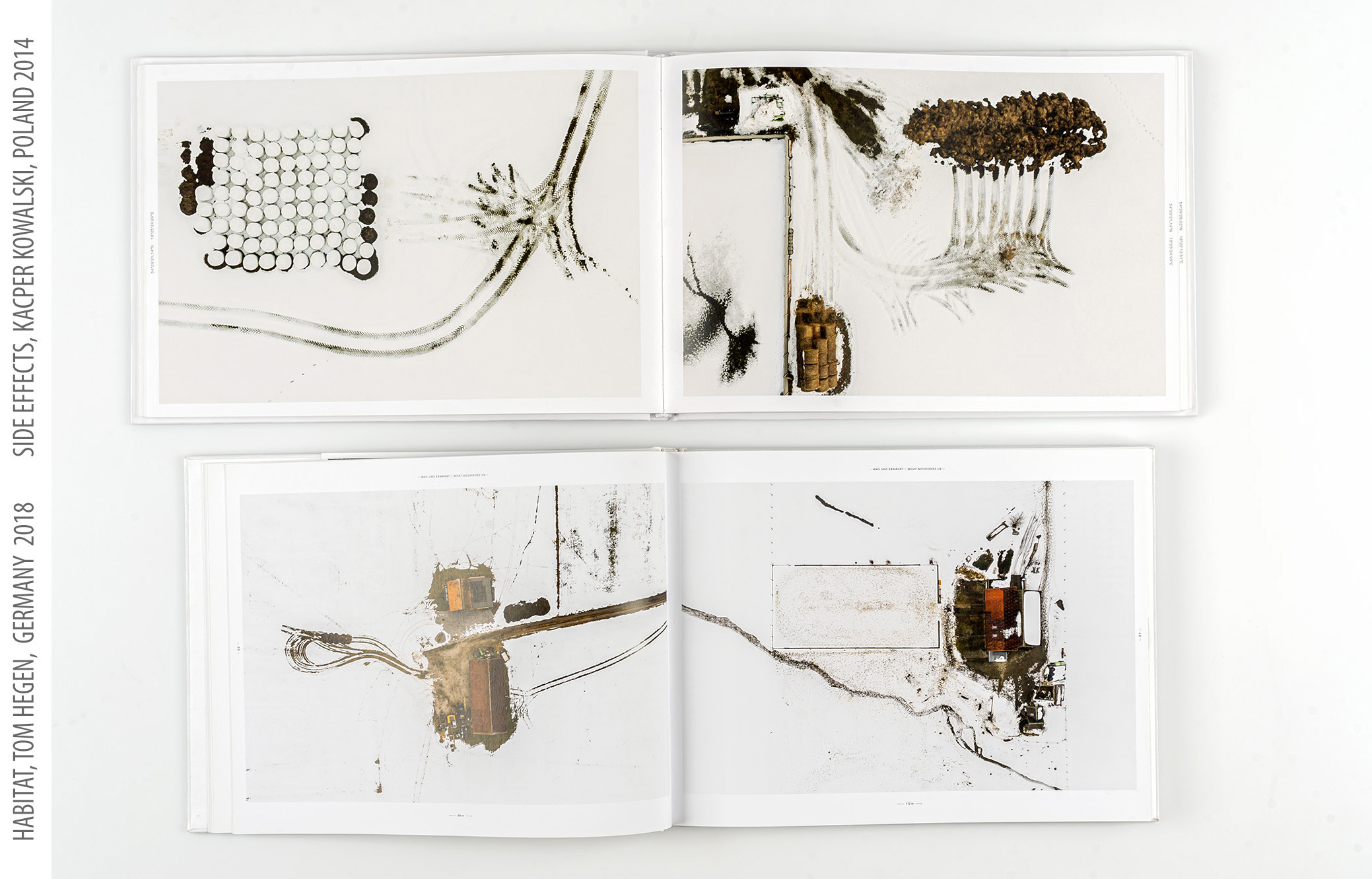
There are two books in the pictures. Side Effects (Migavka Publishing, 2014, Poland) is the one at the top of the list. The book Habitat by Tom Hegen (published by Kerber Verlag, 2018, Germany) is the one at the bottom of the picture.
I had many questions, tried to understand the situation and went back to the beginning.
Point of departure
My book Side Effects did not come out of nowhere. On the contrary, it was the culmination of a long-term photographic project of the same name. And because it was my debut as an author, at the time of its publication it represented the majority of my creative wanderings.
The photographs were taken over a period of seven years. At the time I was flying a paraglider or a gyrocopter, observing the surroundings of my home. I spent thousands of hours in the air and made hundreds of flights. At that time, I wondered whether what I was seeing was still a natural and original landscape, or whether it had already been processed for human use. Had the forest I was looking at always been there, or had it been planted for timber, not much different in nature from an industrial potato crop?
The photographs themselves are documentary, non-evaluative and open to interpretation. They are what they are. But they are read differently and provide many arguments for different sides of the debate. After all, a farmer will see something different in the same field, while an archaeologist, art historian or businessman will see something different.
Over the years, the project has grown out of these discussions, exhibitions, press releases and meetings with authors. A project about humans' impact on the environment and the environment's response to this impact. Together with the team of authors (graphic design: Edgar Bak; texts: Maciej Kuźmicz; curator: Agnieszka Jacobson Cielecka; publisher: Rafał Łochowski) I expressed this in the form of a book. It was a lot of creative fun.
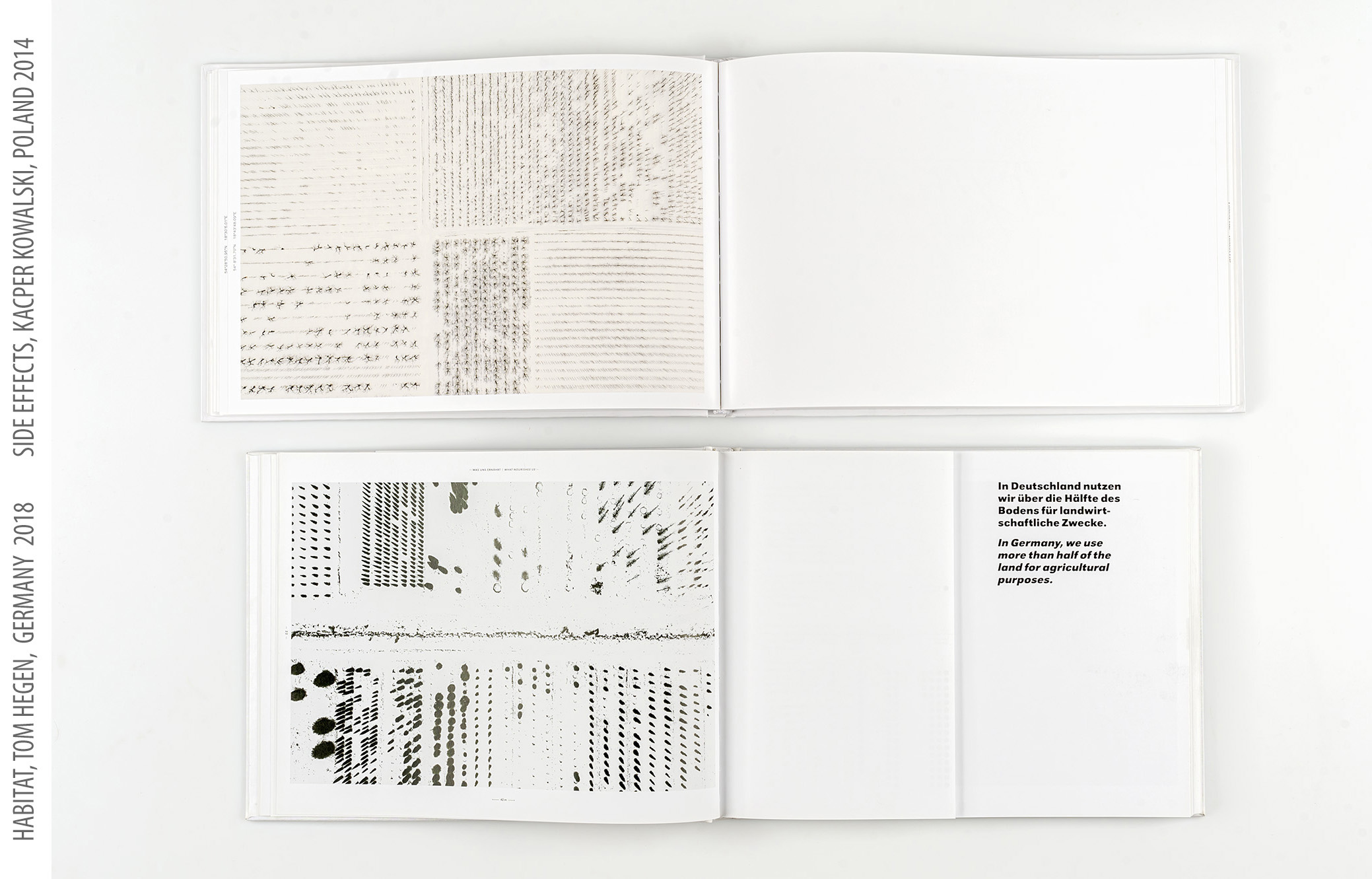
There are two books in the pictures. Side Effects (Migavka Publishing, 2014, Poland) is the one at the top of the list. The book Habitat by Tom Hegen (published by Kerber Verlag, 2018, Germany) is the one at the bottom of the picture.
And the story could have ended there, were it not for a series of events that turned my understanding of 'my' work upside down.
"Own creative language"
Tom Hegen's publication came to my attention by coincidence. While looking for information about it, I came across a Kickstarter page with a fundraising campaign for its publication.
There I read an argument like this:
„The Idea for this project started when I visited an exhibition in Munich about the concept of the »Anthropocene« five years ago. I was fascinated and also shocked by the sheer impact, we as human beings have on our environment. I wanted to explore the idea of the »Anthropocene« with my own creative language.”
Today, looking at my Side Effects and Hagen's Habitat side by side on the table, I struggle to understand the phrase 'my own creative language'. Perhaps it refers to the team of creators who designed these books?
The footer of Habitat reads: "Photography: Tom Hegen; Graphic Design: Tom Hegen; Editing: Tom Hegen; Texts: Georg Gerster, Tom Hegen, Philipp Kienzl, Reinhold Leinfelder".
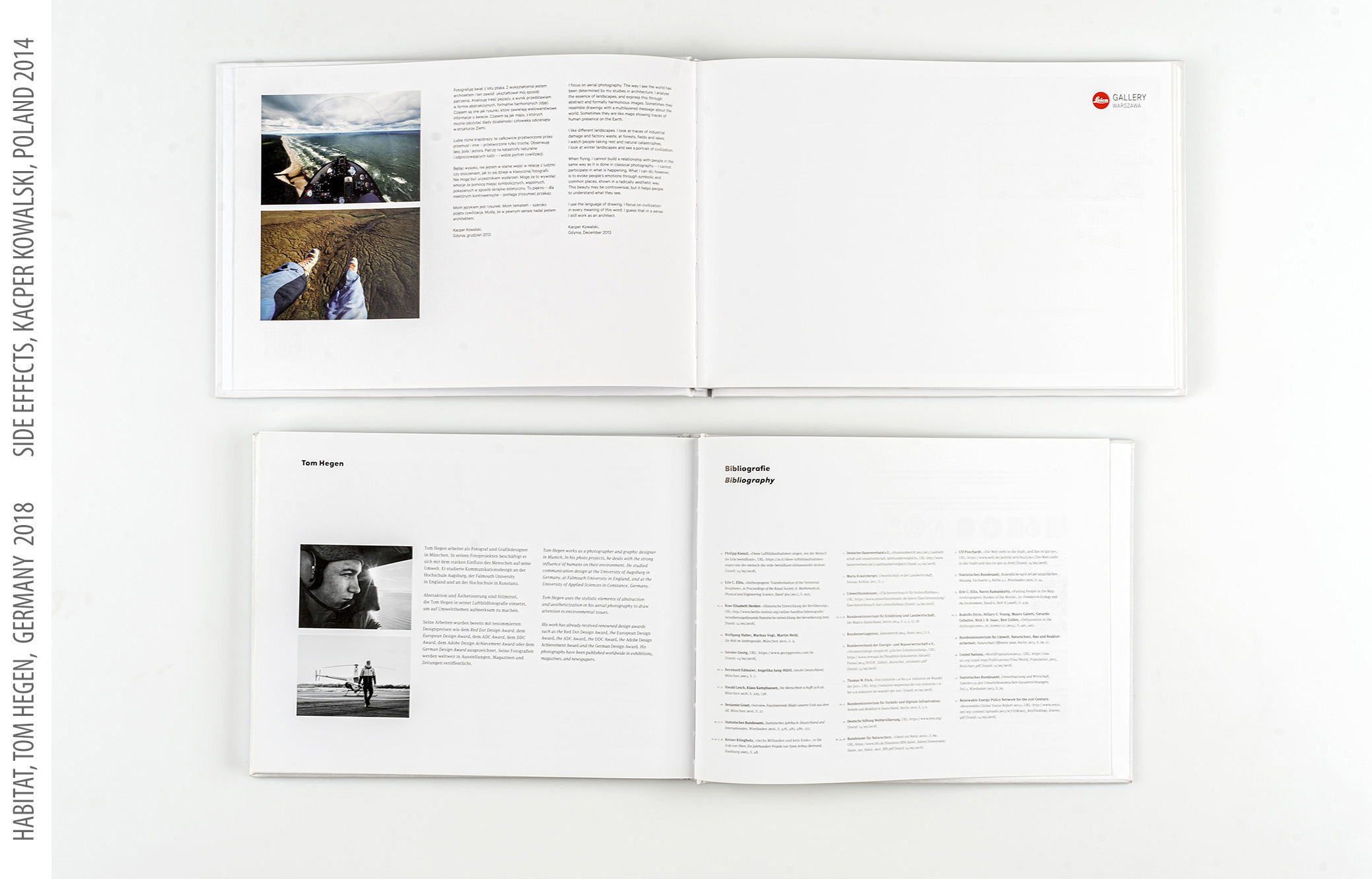
There are two books in the pictures. Side Effects (Migavka Publishing, 2014, Poland) is the one at the top of the list. The book Habitat by Tom Hegen (published by Kerber Verlag, 2018, Germany) is the one at the bottom of the picture.
Looking for a border in the fog
To push a thought forward.
Images and photographs are often the source of more or less literal interpretations. Most creators (myself too) also appreciate when their efforts produce results. And especially when one's work inspires others, opens their eyes to further discoveries that expand their consciousness. My painter grandmother has a saying: "you push a thought forward". This is usually why artists publish their work.
Unfortunately, there is sometimes a misunderstanding of the creative process and issues of intellectual property rights. This happens both on the side of the creators and on the side of the art audience. A book doesn't come out of nowhere, it's not a random collection of photographs.
I consulted a lawyer. I found out that it was not plagiarism because my photo file had not been used. I felt dissonance. I asked about the artistic performance of my work in the conditions of the German landscape. I was told that it was impossible to determine legally whether this was the case because no objective method of recording a visual work had been invented that would allow comparison.
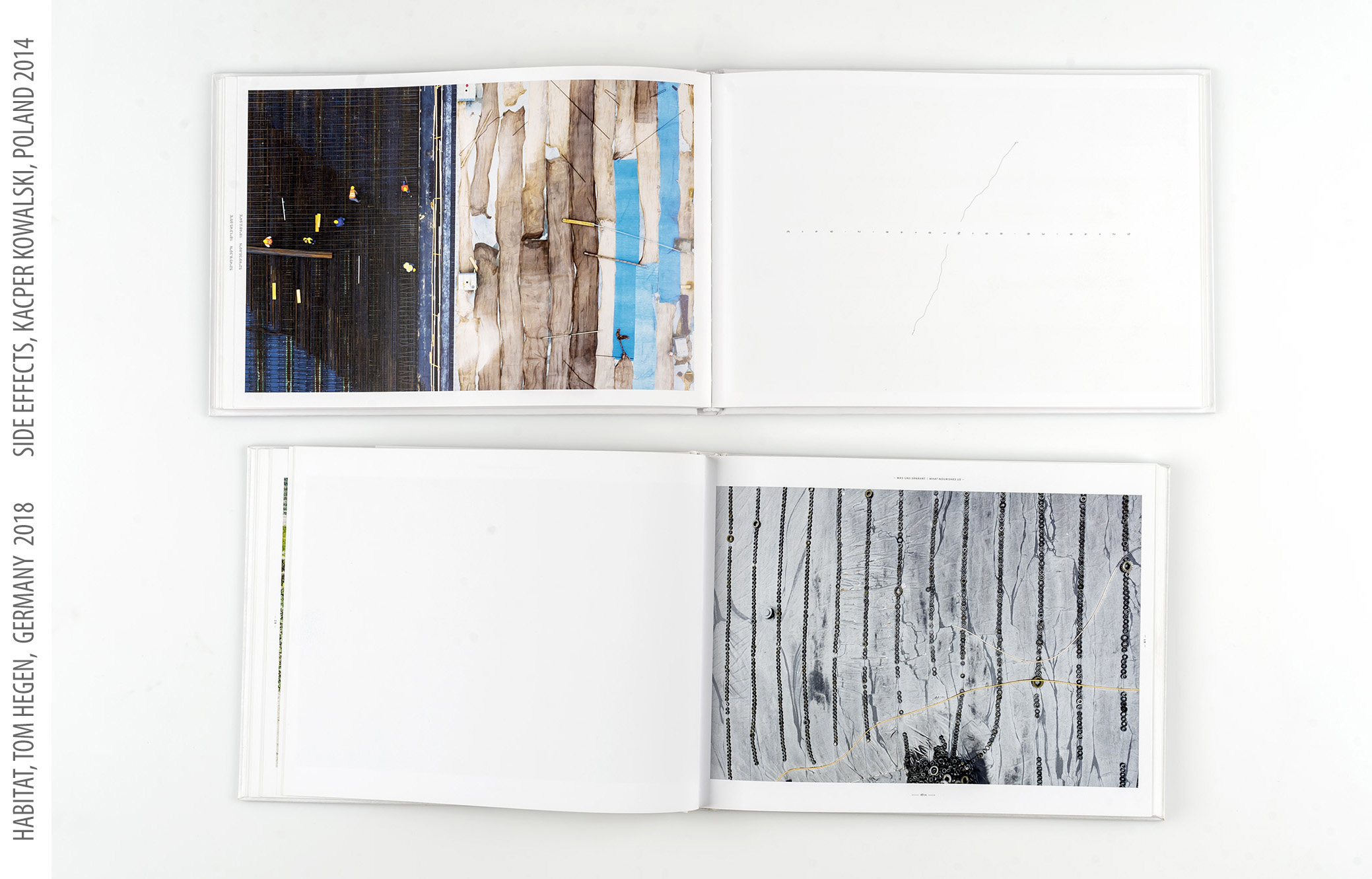
There are two books in the pictures. Side Effects (Migavka Publishing, 2014, Poland) is the one at the top of the list. The book Habitat by Tom Hegen (published by Kerber Verlag, 2018, Germany) is the one at the bottom of the picture.
I found analogies in other areas of art.
Let's talk about covers.
The limits of inspiration are not an easy topic to discuss when it comes to the visual arts. To describe it, I will use an analogy from the world of music - a field with a longer tradition and wider distribution. Because of the way notes are notated, it is also more quantifiable and easier to compare.
In music there are certain defined terms. These include a work - its performance, notation, recording and cover.
A work is an original composition resulting from the artist's original creative activity. It is created in the mind and imagination. The existence of a work can be said to occur when it is presented to the world in some way - for example, as a score or in a public performance. A record of such a performance is called a recording. On the other hand, when a musician plays and distributes a composition by another author, it is called an interpretation or a cover.
Much of the world of popular music today is based on covers. Interpretations differ in timbre, sound, arrangement, accompaniment, genre, etc. In jazz, for example, a few bars of the original composition are played at the beginning. Then the artists have space for their own expression. And then there is a return to the original piece. (Although this is not always the case.)
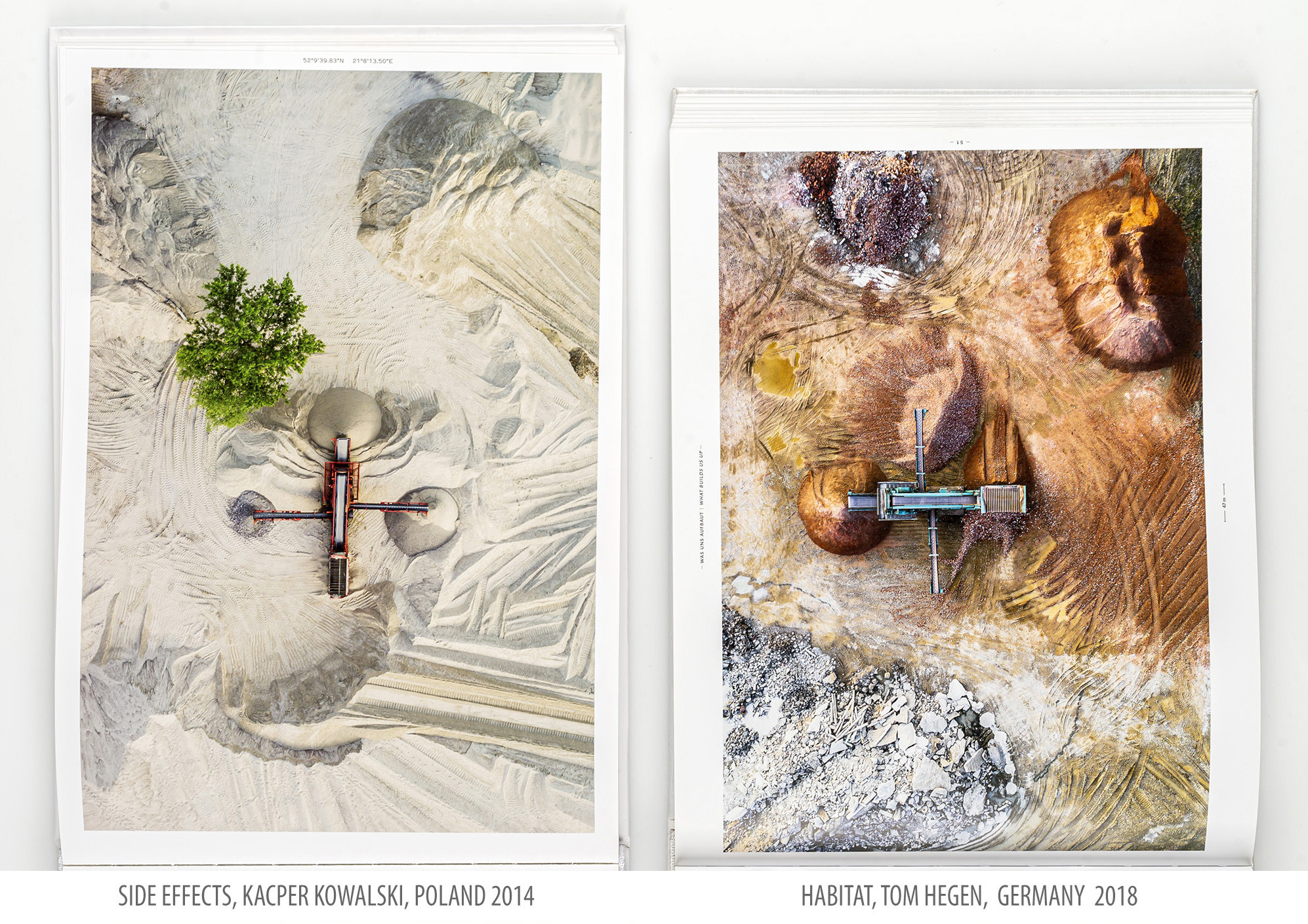
There are two books in the pictures. Side Effects (Migavka Publishing, 2014, Poland) is the one on the left side of the picture. The book Habitat by Tom Hegen (published by Kerber Verlag, 2018, Germany) is the one at the right side of the picture.
Jazz, by the way, is a great reference - it illustrates the freedom of approach to a musical theme. Take the song 'Summertime'. George Gershwin composed the music almost a century ago as part of his opera Porgy and Bess, and the words were written by Edwin DuBose Heyward, Dorothy Heyward and Ira Gershwin. Since then, the song has been performed countless times and has become a standard. It continues to inspire, making a comeback through masterful covers by artists representing musical genres very different from the original version, such as Janis Joplin and Herbie Hancock.
On the other hand, many musicians without significant compositional talents possess - for a change - exceptional interpretive skills. By creating new arrangements, they take these "other people's" works to an even higher level. A perfect example of this is the Chopin competitions, which attract large numbers of classical music lovers to their televisions.
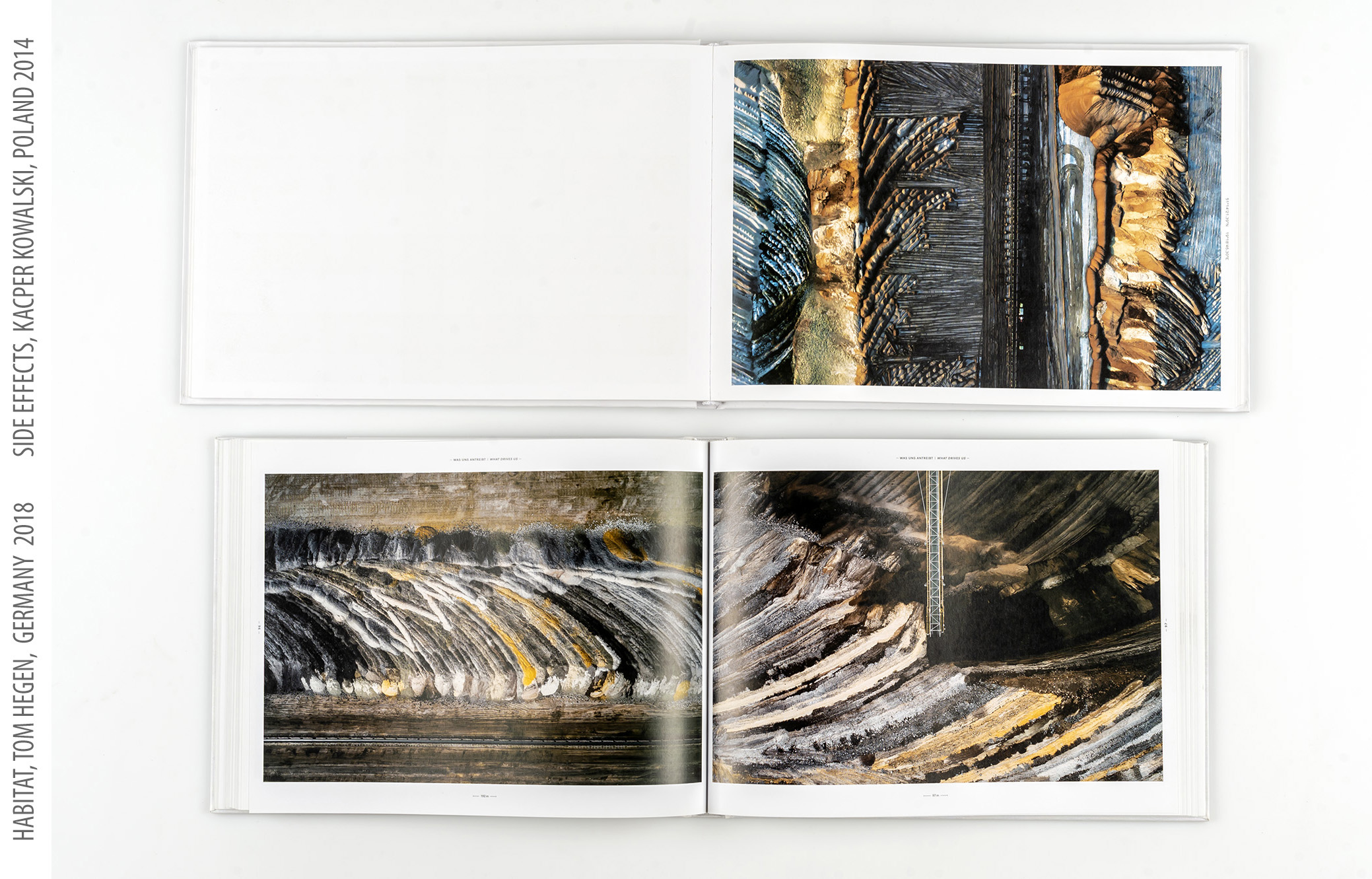
There are two books in the pictures. Side Effects (Migavka Publishing, 2014, Poland) is the one at the top of the list. The book Habitat by Tom Hegen (published by Kerber Verlag, 2018, Germany) is the one at the bottom of the picture.
Both examples above are wonderful, creative and evolving. Both the covers of 'Summertime' and the works of Chopin are created in an atmosphere of respect for the original and the work, time, intellectual and marketing risks put into it. Risks and efforts taken before the original piece was first performed. Performing a cover version is a way of profiting from these risks and efforts, and does not take anything away from the artists interpreting the original when they create their own work from it. It is an extremely cleverly worked out win-win situation for both parties.
In contrast, self-respecting music creators avoid claiming authorship of the original they are interpreting as much as possible. To do so would result in immediate ostracism from the community, and such an artist would most likely be accused of plagiarism. Most likely he would also have to add an official reference to the composer of the original on which his work is based. He would also probably have to share the profits from the distribution of the new work, and the claims arising from this would not hesitate to go to court.
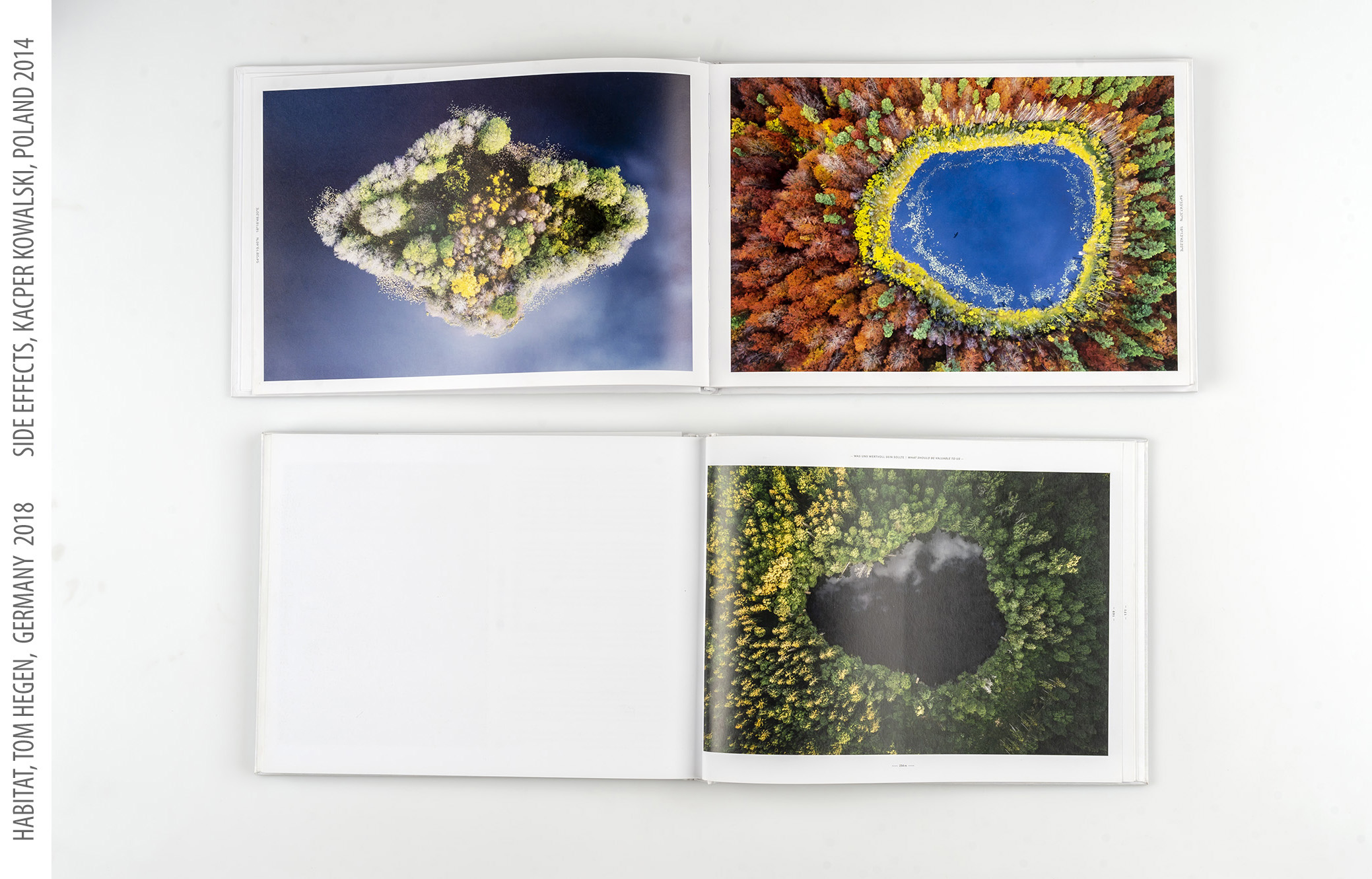
There are two books in the pictures. Side Effects (Migavka Publishing, 2014, Poland) is the one at the top of the list. The book Habitat by Tom Hegen (published by Kerber Verlag, 2018, Germany) is the one at the bottom of the picture.
It's already been invented, so why not in the visual arts?
On side effects of Side Effects.
In music it is very helpful, however, to have the piece notated on a staff. This notation plays a major role in examining the relationship between the two juxtaposed pieces - as a test of essential similarity is carried out on this basis.
In addition, a song can be immersed to convey the essence of the melodic composition. A photograph or a book of photographs can't be hummed.
I know of no objective method of comparing a photograph or other visual work. Nor is the term "cover" used in legal interpretations of the visual arts. And what about practice?
I have the irresistible impression that Tom Hegen's book Habitat is a cover for Side Effects.
The images and their sequences are written into my work like notes in a score or a recording of the first public performance of a work. Hegen didn't have to compose the images, he just had to find places that looked similar.
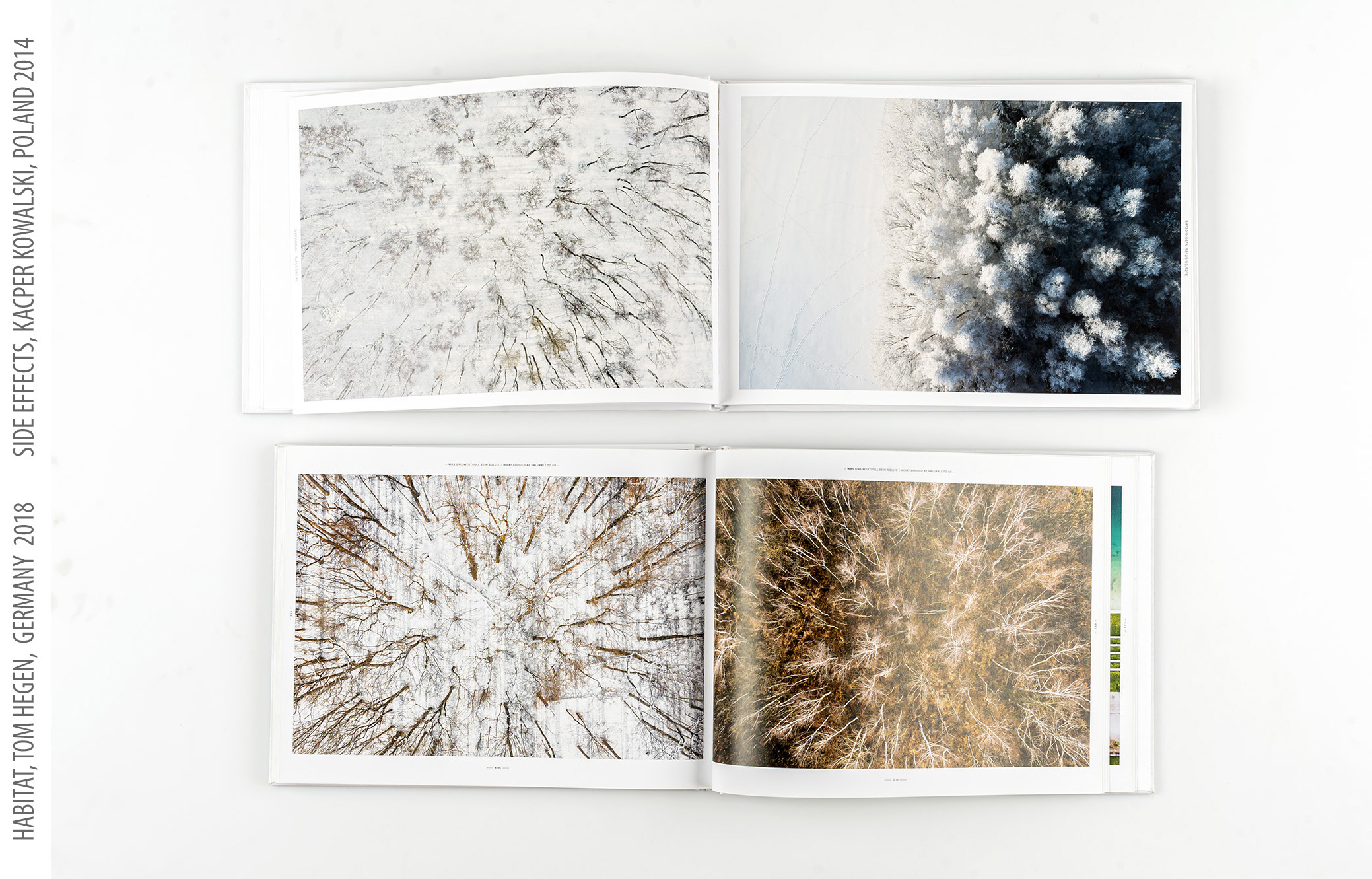
There are two books in the pictures. Side Effects (Migavka Publishing, 2014, Poland) is the one at the top of the list. The book Habitat by Tom Hegen (published by Kerber Verlag, 2018, Germany) is the one at the bottom of the picture.
It seems to me that the attitude: I want to have something unique and I am willing to pay/work for it, is changing before our eyes to: I want to have the same thing and I can make/copy/organise it myself. Does the lack of a method to objectively record a visual work change the ethos of creativity and the notion of originality, respect for work and cultural heritage? After all, the rights of creators should be the same in all creative fields.
When I started talking about this situation in the community, I was met with opposing opinions. One side was shocked, the other indifferent. Some also expressed surprise that I was the one who was surprised, as there are more similar cases. I also learnt that in such situations it is worthwhile to provoke a discussion in the community, but that there is a risk of getting myself into trouble.
So I was thinking about it and life went on.
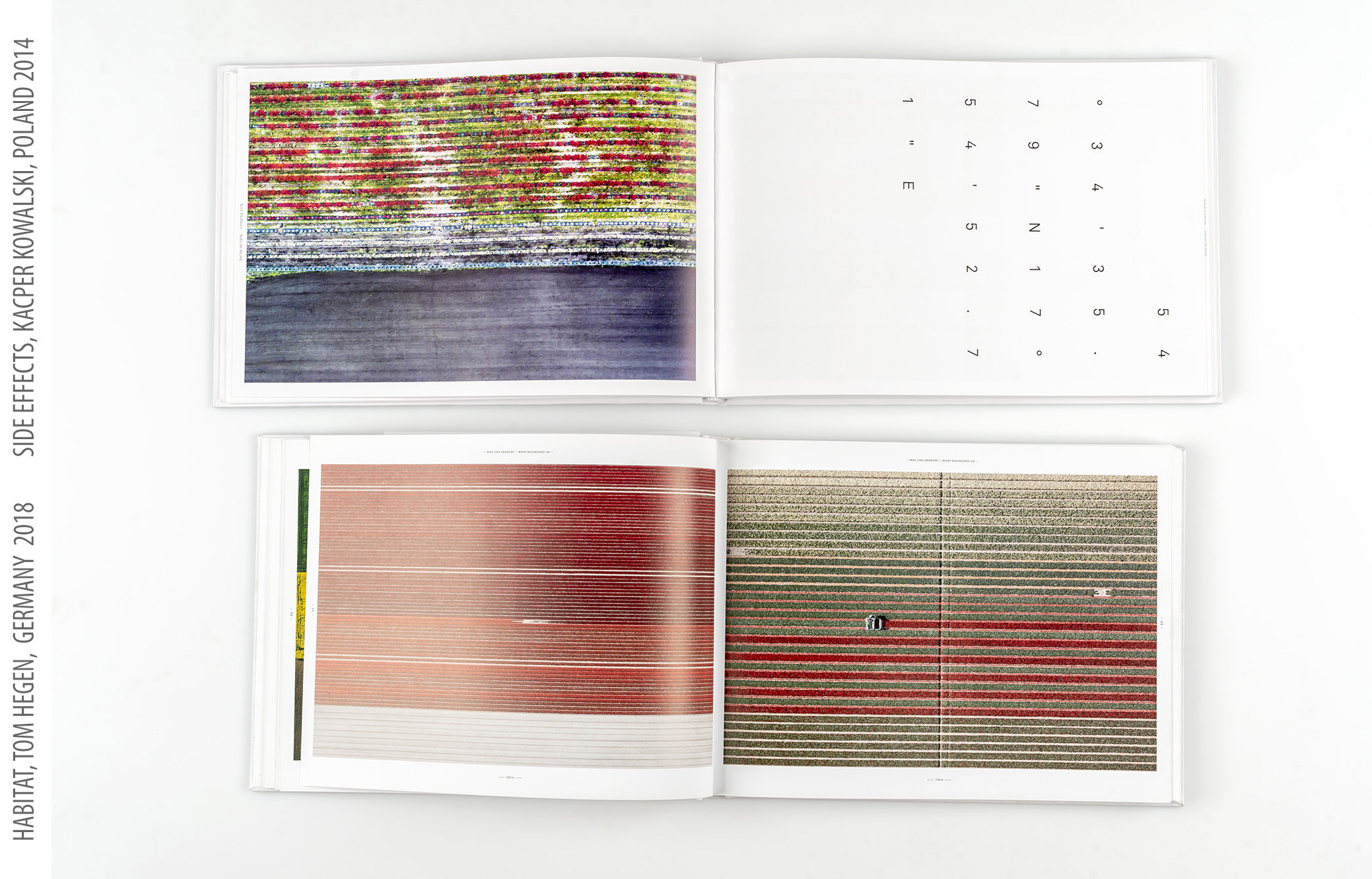
There are two books in the pictures. Side Effects (Migavka Publishing, 2014, Poland) is the one at the top of the list. The book Habitat by Tom Hegen (published by Kerber Verlag, 2018, Germany) is the one at the bottom of the picture.
History likes to repeat itself
I might not have written this article at all if I had not met Jamey Stillings along the way. The American photographer told me about his project, The Evolution of Ivanpah Solar.
“I was impressed with the Habitat book, purchased a copy, and emailed Tom Hegen in July 2019. Tom also admired my aerial work and had already ordered a copy of The Evolution of Ivanpah Solar (Steidl, 2015). I have extensively photographed renewable energy development throughout the American West since 2010, including nineteen flights over Ivanpah Solar and six over Crescent Dunes Solar between 2010 and 2015.”
“In June 2021, I learned Tom was photographing in the American West and reached out to him. We emailed back and forth several times. He wrote, ‘I’m mainly focusing on man-made landscapes, such as mining operations, agriculture, and construction sites.’”
“In February 2022, my friend and colleague George Steinmetz informed me about Tom’s Solar Series. I was shocked that Tom had chosen to photograph Ivanpah Solar and Crescent Dunes Solar, given that he was very familiar with my work over these renewable energy sites. Frankly, since the release of the Solar Series, I have been uncomfortable communicating openly and candidly with Tom, as we have never discussed his decision to photograph Ivanpah Solar and Crescent Dunes Solar.”
What would you do in such a situation?
Kacper Kowalski
January 2024
The link to the Habitat book Kickstarter page is here.
The link to the Side Effects project page is here.
The link to the accompanying illustrations is HERE. (You can use them for free to illustrate your own reflections under a Creative Commons Zero licence.)
